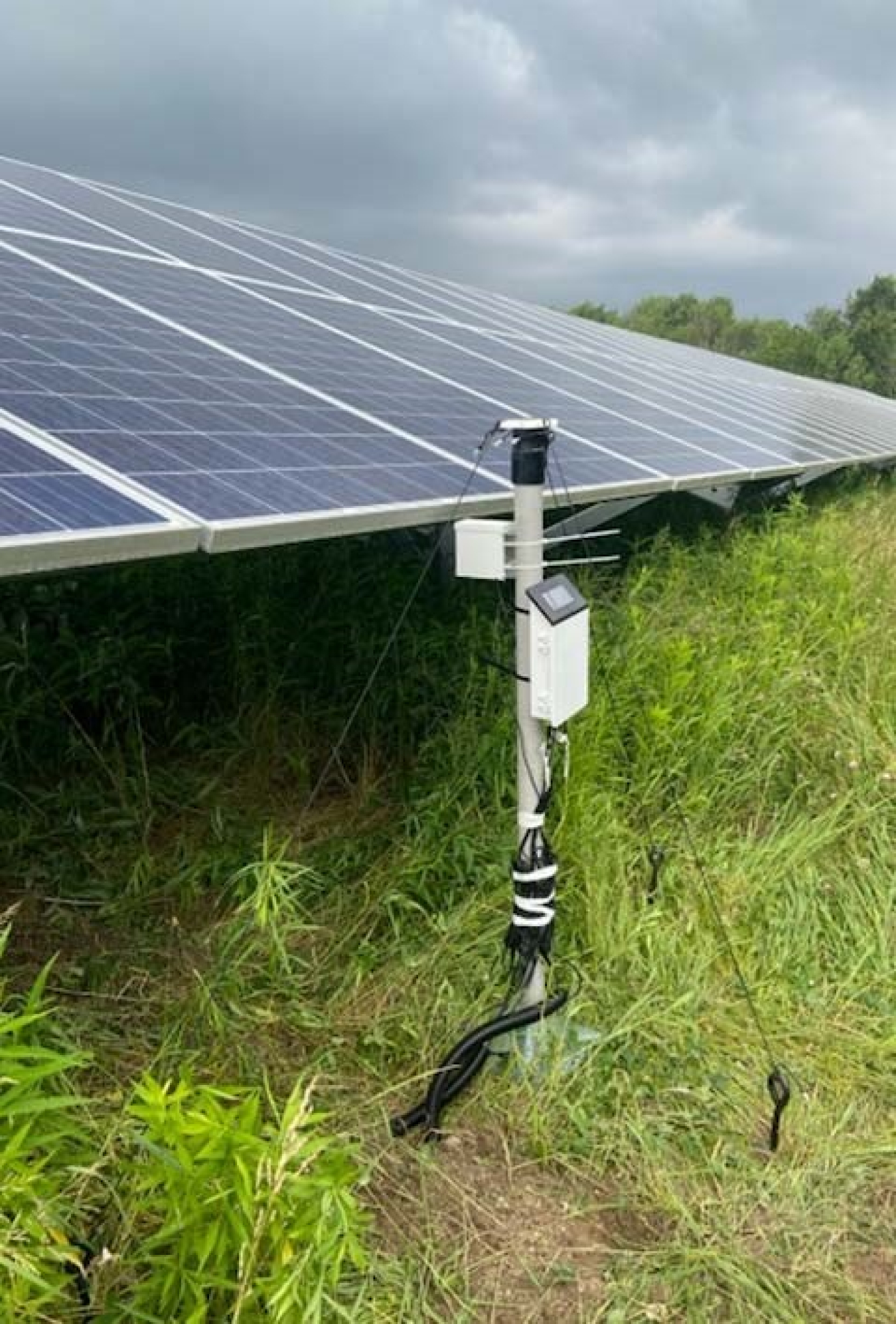When it rains, water doesn’t necessarily puddle on the ground until it evaporates; gravity can cause it to either seep into the soil or flow downhill. Rainwater at the more than 5,000 utility-scale solar sites in the United States is no different, but how the solar panels affect water flow has been hard to understand—until now. Communities can now use a solar-specific tool to understand stormwater runoff at their local solar energy installations.

Stormwater runoff refers to rain and snowmelt that flows over land or impervious surfaces, such as paved streets, parking lots, and building rooftops, and does not soak into the ground. This runoff can have negative impacts on the local environment, such as soil erosion or flooding, so local and state governments require that potential runoff from all types of development, including ground-mounted solar installations, be assessed and mitigated before a construction permit is granted.
Until recently, models of stormwater runoff were not designed for ground-mounted solar, leaving permitting officials to make educated guesses or use simple approximations to estimate the runoff. Inaccurate estimates can result in unnecessary and costly stormwater infrastructure requirements, such as retention ponds, that increase the cost of solar energy and limit beneficial infiltration of water through the soil.
Thanks to a project funded by the DOE Solar Energy Technologies Office, solar developers and local regulators no longer have to rely on those incomplete models. Through the Photovoltaic Stormwater Management Research and Testing (PV-SMaRT) project, researchers at the National Renewable Energy Laboratory (NREL), in partnership with the University of Minnesota, Great Plains Institute, and Fresh Energy, conducted field research on stormwater infiltration and runoff at five geographically dispersed utility-scale solar sites and used the collected data to validate a computer model
that helps developers and regulators to predict and manage stormwater flow.
With the PV-SMaRT Runoff Calculator, solar developers and regulators can now accurately estimate the amount of stormwater runoff from ground-mounted solar facilities and develop appropriate mitigation strategies. These new capabilities can potentially reduce the construction costs of ground-mounted solar arrays while enabling effective stormwater management.
The project also developed best practices for stormwater management at solar sites
. The project team found that the four most important elements to consider during solar site development include managing the soil compaction and density, understanding the soil depth, planting and managing vegetation between and under the solar panels to enable water infiltration, and keeping an appropriate amount of distance between panels to maximize infiltration. By implementing these best practices, developers can minimize stormwater runoff and avoid the need for costly infrastructure requirements.
The stormwater runoff model for ground-mounted solar installations has been downloaded by state and local jurisdictions, solar developers, and other users in 25 states so far. Project team members continue to provide technical support so more entities can use this tool to improve stormwater management and facilitate permitting at ground-mounted solar installations across the country.
Learn more about PV-SMaRT and the Solar Energy Technologies Office’s soft costs research.
